Back in 2018 when the Hyundai Kona first rolled out, many were drawn to its sharp, aggressive-looking exterior. This is especially obvious when you consider that the Hyundai made crossover sold pretty well over 2018 and 2019. In Europe alone, Hyundai sold a whopping 150,000 Konas. Here in the Philippines, sales for the crossover went up by 231 percent in 2019.
While popular, some however were bothered with the generous body claddings on the Kona. That however was addressed by Hyundai when it debuted the all-new 2021 Hyundai Kona N-Line.
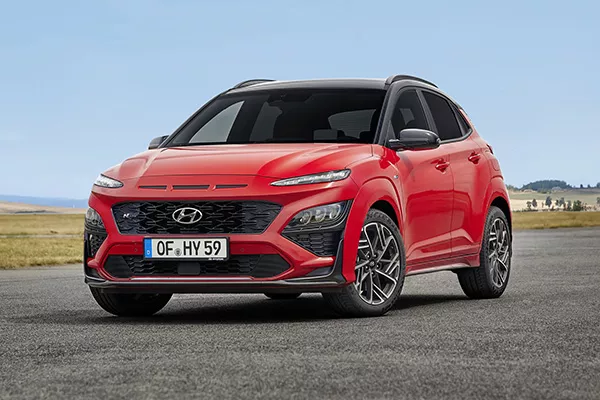
The 2021 Hyundai Kona N-Line is sportier than the regular Kona
From the side, you’ll see that the N-Line version of the Kona is totally absent of the plastic cladding the previous versions had. Its fender flares now feature a uniform color with the rest of the body. The 2021 Kona N-Line also gets beefier looking rocker panels.
Up front, the new Kona N-Line also features a different front fascia. The three slots sitting slightly ahead of the hood gives the new crossover a lot of character, and the new daytime running lights (DRLs) are sharper looking than the previous version. Dominating the front of the Kona N-Line is the mesh grille.
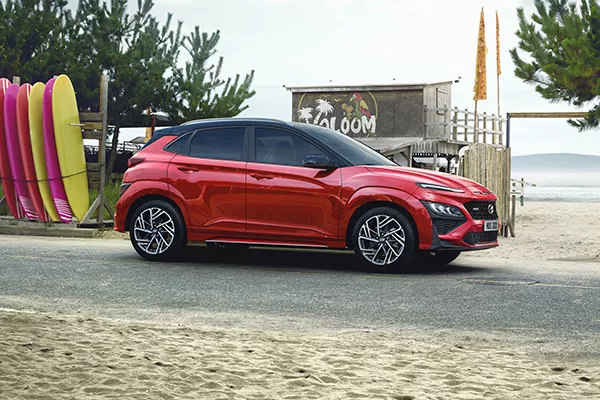
The Kona N-Line lacks the plastic cladding found on the standard Kona
Like what was shown in the 2021 Kona teaser, the main LED cluster now looks more like the fins of a shark. The Kona N-Line also loses the faux skid plates and replaces it with an N-Line exclusive lower lip that ends towards the corners with a vertical fin.
Towards the rear, you’ll find a new diffuser. The taillights are also new, and they mirror the “shark-gill” look of the LED headlamps. The style of both versions of the new Kona is then completed with a new set of 17-inch or 18-inch alloy wheels. The wheels that the Kona N-Line rides on is the larger 18-inch wheelset.
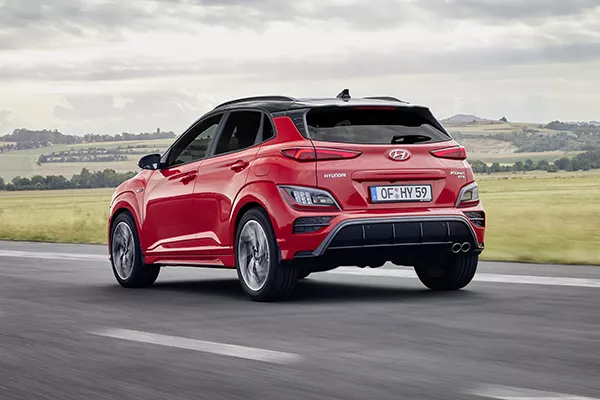
The rear end doubles down on that futuristic "cyber-shark" look
While the Hyundai Kona N-Line hosts a lot of new designs, the standard 2021 Hyundai Kona is more familiar looking. It still features the new, sharper, and sportier look, but its sides still bare plastic cladding. Like the Kona N-Line, the new standard Kona comes with a new pair of DRLs, and a 40mm growth in overall length.
The new 2021 Hyundai Kona also features an updated interior. For starters, it now has ambient lighting, a larger infotainment touchscreen, as well as new materials for the upholstery with fabric as standard. Hyundai also gave the new Kona an electronic parking brake.
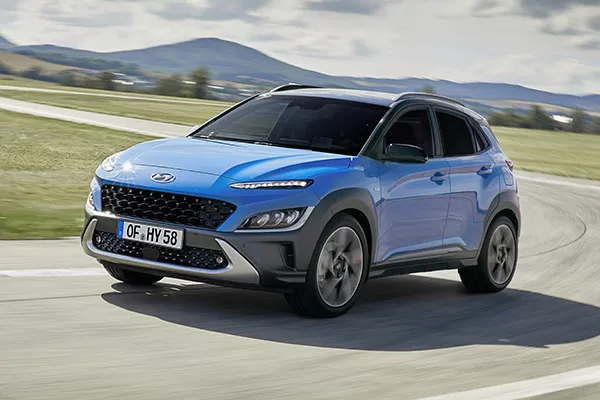
The standard 2021 Hyundai Kona
When it comes to on-board tech, the new Kona is well equipped. There’s a split-screen function for the optional 10-inch head unit, wireless Android Auto and Apple Carplay, and adaptive cruise control. Due to the longer length, the Hyundai also says that the Kona is more spacious than its predecessor. It features more legroom, as well as larger cargo capacity.
Propelling the new 2021 Hyundai Kona’s most powerful engine option is a turbocharged 1.6-liter inline-4. The said engine can make 195 horsepower and it is paired to a seven-speed dual-clutch transmission (DCT). The available drivetrains include a front-wheel-drive and an all-wheel-drive. The new Kona N-Line will be propelled by the aforementioned engine with power sent to all four wheels. It also has a unique steering tune that’ll make it handle differently than the standard 2021 Kona.
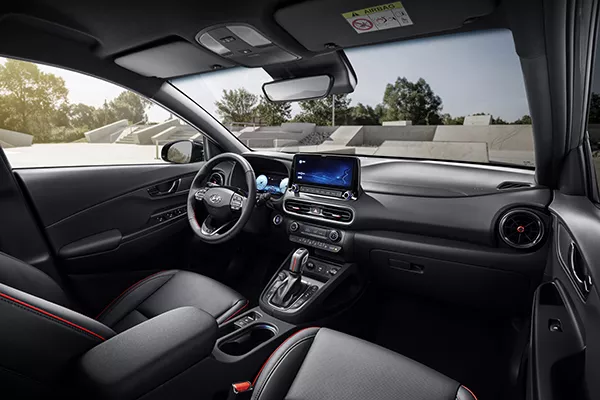
The new Kona's interior. Note the red stitching and the large touchscreen
Besides the 1.6-liter turbo, there’s also a 1.6-liter mild-hybrid diesel variant that can make up to 134 horsepower. This powertrain uses a seven-speed DCT or a six-speed intelligent manual (iMT). If you don’t like diesel engines, the new Kona also has a gasoline mild-hybrid version. It uses a 1.0-liter turbocharged engine that’s paired to the same transmission options as the diesel version.
Hyundai will begin selling the Kona towards the end of 2020, with the hybrid versions to follow a year later. Note that the Kona is currently one of the most popular Hyundai crossovers in the Philippine market. As such, we can count on Hyundai Philippines to introduce this new Kona eventually. We’re also wishing that Hyundai PH brings in the Kona N-Line because it sure is one interesting crossover.
For more automotive news, keep reading here on Philkotse.com.
Know more about Hyundai Kona 2025

The Hyundai Kona 2023 is a subcompact crossover brought in by the Korean marque. It is available in the Philippines in one variant only which is priced at Php 1,188,000. Powering this vehicle is a 2.0-liter NU MPI Atkinson gasoline engine capable of generating 147 horsepower and 179 Nm of torque. Only a 6-speed automatic transmission is used to drive the power from the engine to the front wheels exclusively.
In terms of dimensions, the Kona has a length of 4,165 mm, a width of 1,800 mm, and a height of 1,550 mm. Additionally, it comes with a wheelbase and ground clearance rated at 2,600 mm and 170 mm, respectively. In the local market, this Korean subcompact crossover goes up against the likes of the Mazda CX-3, Kia Seltos, and Geely Coolray.
Discontinued
ExploreRecent posts
- 2021 Hyundai Tucson teaser Sep 03, 2020
- Hyundai Kona teaser Sep 30, 2020
- Hyundai Kona Night Edition debut Oct 14, 2020
- Hyundai Kona gets santa fe grille Sep 30, 2020
- 2021 Hyundai Kona N Spy Video Sep 30, 2020
















